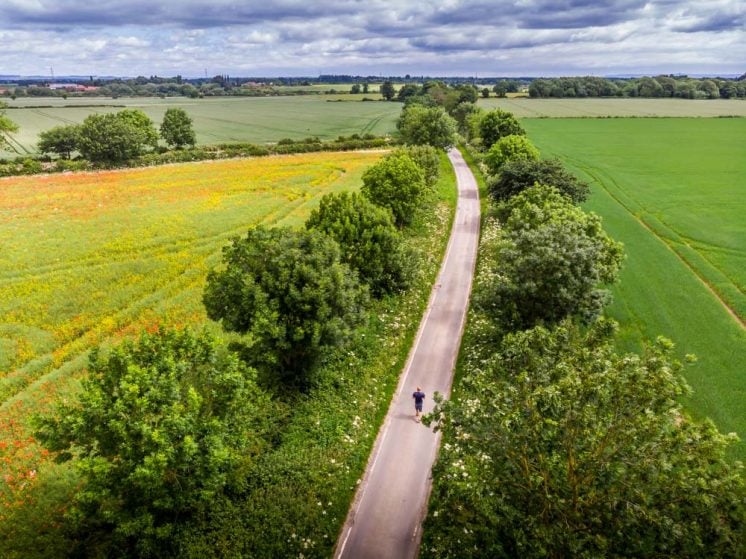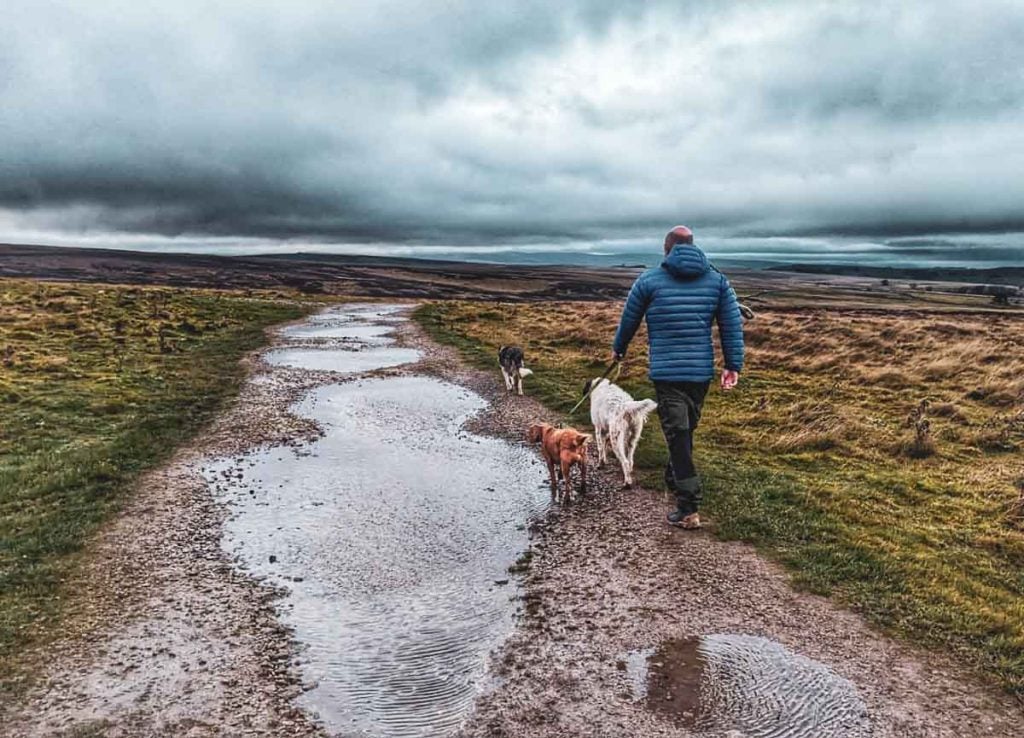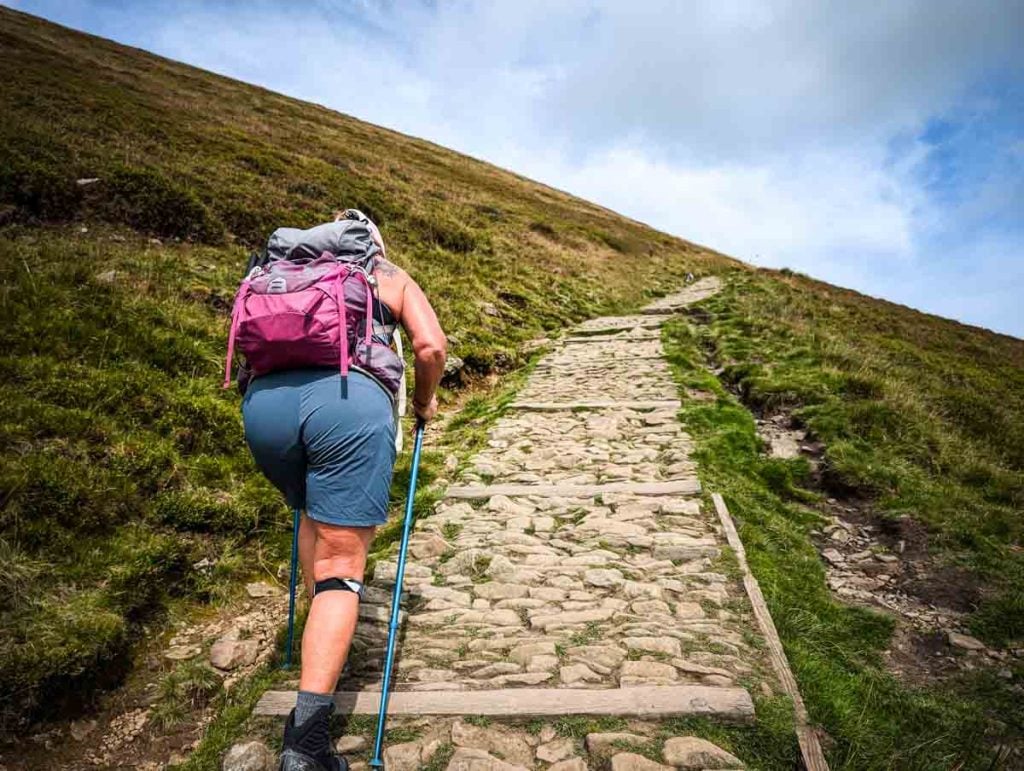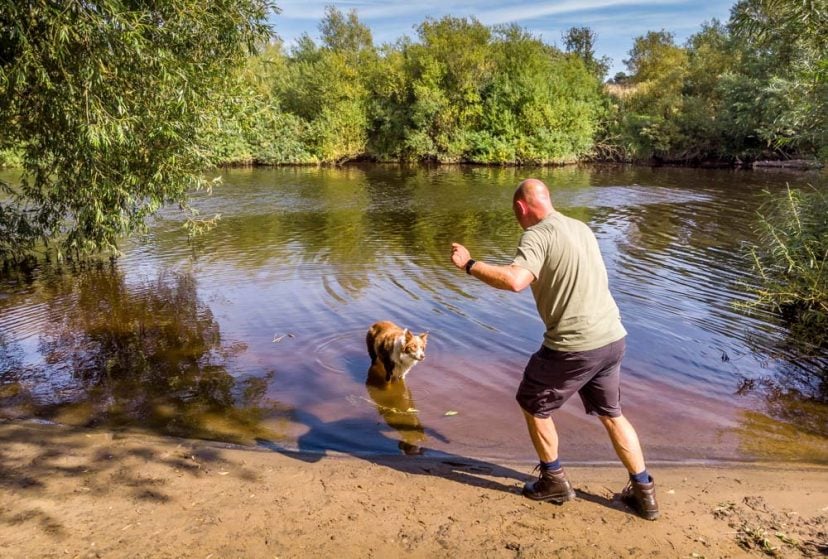There are days when the noise in my own head is the loudest sound in the world. Days when stress, anxiety, or just a wave of low mood feels like a heavy blanket I can’t shake off.
Over the years, through all of life’s ups and downs, I’ve found that the simple act of lacing up my boots and stepping outside has been my most reliable medicine.
It’s not about burning calories or hitting a step count. For me, it’s about the steady rhythm of my feet on the trail quieting the chaos in my mind.
It’s the fresh air clearing out the cobwebs and the forward motion reminding me that even on the toughest days, progress is possible—one step at a time.
Walking has become my non-negotiable act of self-care, the tool I use to reset my perspective and reconnect with myself.
This guide is born from that experience. It’s a collection of the science that explainswhy this simple act is so powerful, and the practical steps I’ve learned to make it a sustainable part of my life.
My hope is that it helps you find your own path to a calmer mind, just as it has for me.

Introduction: More Than Just Steps – Your Path to Mental Well-being
When your mind feels heavy, overwhelmed, or stuck in a cycle of worry, the idea of doing anything can feel monumental. The energy to tackle complex solutions simply isn’t there.
But what if one of the most powerful tools for improving your mental well-being was also one of the simplest?
What if it required no special equipment, no expensive membership, and no complicated instructions—only a comfortable pair of shoes and the willingness to take a single step?
Walking is a profoundly accessible and scientifically proven way to manage symptoms of stress, anxiety, and depression. Its rhythmic, low-impact nature acts as a natural balm for the mind, demonstrating that what you do with your body has a powerful and direct effect on your mental state.
This guide is designed to walk you through everything you need to know. You will learn the science behind how walking rewires your brain for resilience, receive a step-by-step plan to start a routine that feels achievable, discover simple techniques to amplify the mental health benefits of every walk, and find compassionate strategies to overcome the motivational hurdles that we all face.

The Science: How Walking Rewires Your Brain for Resilience
The positive feeling you get from a walk isn’t just in your head; it’s in your brain chemistry.
The connection between walking and mental well-being is rooted in measurable physiological changes that create a cascade of positive effects.
The Feel-Good Chemical Cascade
Physical activity, including walking, stimulates your brain to release powerful chemicals that naturally improve your mood. These include:
- Endorphins: Often called “feel-good” chemicals, endorphins are the body’s natural pain and stress relievers. They are responsible for the sense of calm and well-being you might feel after a brisk walk.
- Serotonin and Dopamine: These crucial neurotransmitters help regulate mood, motivation, and feelings of pleasure. Regular walking boosts their levels, promoting feelings of calm and well-being and helping to energize your spirits. Many antidepressant medications work by targeting these same chemical pathways.
Turning Down the Stress Response
Walking is a powerful tool for regulating the body’s stress response. It helps to lower the circulating levels of stress hormones like cortisol and adrenaline.
This process is linked to its influence on the hypothalamic-pituitary-adrenal (HPA) axis, the body’s central stress response system. By calming this system, walking helps your body relax, leading to a state of greater calm and buffering you from the negative effects of chronic stress.
Building a Better Brain
The benefits of walking extend beyond immediate mood improvement to long-term cognitive function. A simple walk increases blood flow to the brain, delivering more oxygen and nutrients that are vital for its health.
This enhanced circulation has been shown to improve memory, concentration, and mental clarity.
Furthermore, research indicates that regular exercise can promote neural growth and new activity patterns in the brain, making it more resilient to stress over time.

Your First Step: Creating a Sustainable Walking Routine
Knowing the benefits is one thing; putting them into practice is another, especially when you’re feeling low on energy. This section is designed to provide a practical, non-intimidating guide to getting started.
Start Small, Win Early
When you’re struggling with motivation, the most important rule is to start small.
Forget ambitious goals like walking for an hour every day. The initial objective is simply to build momentum. A brisk 10-minute walk can be enough to clear your mind and help you relax.
Even a 5-minute walk during your lunch break is a significant victory. Research shows that even short bursts of activity, such as three 10-minute walks spread throughout the day, can be just as beneficial as one continuous 30-minute walk.
The goal is to create a pattern of small, consistent wins that build your confidence.
How Much is Enough? The 150-Minute Guideline
As you build consistency, a helpful long-term target is the official recommendation from health authorities like the NHS and CDC: aim for at least 150 minutes of moderate-intensity activity (like a brisk walk) per week.
It is crucial to see this as a goal to work towards, not an immediate requirement. You can break it down into manageable chunks, such as 30 minutes five days a week, or even smaller 10-15 minute segments whenever you can fit them in.
“Habit Stacking”: Tying Your Walk to an Existing Routine
One of the most effective ways to build a new habit is to anchor it to one you already have. This technique, known as “habit stacking,” removes the friction of deciding when to go for a walk. Try tying your walk to a non-negotiable part of your day. For example:
- “Immediately after I finish my morning coffee, I will put on my walking shoes and walk around the block.”
- “As soon as I close my laptop for the day, I will go for a 15-minute walk.”
Gear Up for Comfort (Not Performance)
You do not need expensive athletic wear or specialized hiking gear to start walking.
The only essential item is a pair of comfortable, well-fitting shoes that won’t hurt your feet. While you don’t need to spend a lot, investing in a good pair of shoes is the best first step, and as you progress, you might find our reviews on walking and hiking gear helpful.
The focus should always be on removing barriers, not creating them. Simplicity and accessibility are what make walking such a powerful tool.
Beyond the Pavement: Techniques to Amplify Your Walk’s Impact
Once you’ve established a basic routine, you can incorporate simple techniques to deepen the mental health benefits of your walks.
The Power of Place: Why Walking in Nature is a Super-Charger
Exercising outdoors, often called “green exercise,” provides amplified mental health benefits.
A landmark study led by Stanford researchers found that participants who walked for 90 minutes in a natural environment showed decreased activity in the subgenual prefrontal cortex, a brain region associated with the cycle of negative thoughts that is a key factor in depression.
Participants who walked in a high-traffic urban setting did not experience this benefit. Time in nature has been shown to lower stress, reduce mental fatigue, and increase feelings of vitality and self-esteem.
Even a simple stroll through a local park can be restorative, but immersing yourself in a truly scenic landscape, like a walk up The Cheviot in Northumberland, can do wonders for your mental well-being.
As you grow more comfortable, these nature walks may become more adventurous, and it can be helpful to understand the difference between walking, hiking, and trekking to best describe your new favorite activity.
Mindfulness on the Move: Walking as Meditation
You can transform a simple walk into a powerful mindfulness practice by treating it as a form of “meditation in motion“.
This involves intentionally shifting your focus from the worries in your head to the physical sensations of the present moment. A simple and effective way to do this is with the
5-4-3-2-1 Grounding Exercise. As you walk, silently name:
- 5 things you can see
- 4 things you can feel (the breeze on your skin, the ground under your feet)
- 3 things you can hear
- 2 things you can smell
- 1 thing you can taste
This sensory exercise anchors you in the present and can interrupt the flow of anxious thoughts.

The Social Step: The Benefits of Walking with Others
If you’re feeling lonely or isolated, walking with others can be a powerful antidote.
Combining physical activity with positive social interaction can improve your mood, ward off depression, and boost self-esteem.
Asking a friend to join you, or joining a local walking group, can provide both motivation and a valuable sense of connection.
You may find our guided social walks a perfect activity to share time in the outdoors and making good connections.

Overcoming the Motivation Hurdle: How to Walk When You Don’t Want To
This is often the biggest challenge. The very symptoms of depression and anxiety—low energy, fatigue, and lack of motivation—can make the idea of exercising feel impossible.
This section is about working with those feelings, not against them.
Acknowledge the Feeling, Take the Action
First, validate your feelings. It is completely normal and understandable to feel unmotivated or too tired to move when you are struggling. The key is not to fight that feeling, but to acknowledge it and then change the goal.
The objective is no longer “go for a 30-minute walk.” It’s a micro-goal: “just put on your shoes and step outside for one minute.”
More often than not, that tiny first action is enough to overcome the initial inertia.
Make it Enjoyable, Not a Chore
You are far more likely to stick with an activity if you enjoy it. Try pairing your walk with something you already love, like listening to your favorite podcast, an engaging audiobook, or an uplifting music playlist.
Framing the walk as protected time for entertainment or relaxation, rather than another chore on your to-do list, can dramatically shift your perspective.
Don’t Break the Chain (But Forgive Yourself if You Do)
Consistency is more important than intensity. It is more beneficial to take a short walk every day than one long walk once a week.
However, it is also important to practice self-compassion. If you miss a day, it is not a failure. The goal is simply to get back on track the next day without the guilt or self-criticism that can feed a cycle of negative thinking.

Walking as Part of a Holistic Mental Wellness Plan
To be a responsible and effective tool, walking must be placed within the broader context of mental health care.
A Powerful Tool, Not a Panacea
It is crucial to understand that while walking is an incredibly effective, evidence-based tool for managing symptoms of mild to moderate depression and anxiety, it is not a replacement for professional medical advice, therapy, or prescribed medication.
If you are struggling, please speak with a doctor or mental health professional to discuss a treatment plan that is right for your specific situation.
Combining Walking with Other Strategies
Walking works best when it complements other healthy lifestyle habits that support mental well-being. These include maintaining a consistent sleep schedule, eating a nutritious diet, and practicing other forms of mindfulness or relaxation. Think of walking as one of the core components in your comprehensive self-care strategy.
FAQ
Conclusion: Your Next Step Matters Most
Walking is a powerful reminder that we can influence how we feel. It is a simple, accessible, and scientifically-backed tool that can be customized to any fitness level and adapted to any lifestyle. It empowers you to take an active role in your own mental well-being.
Your journey to a calmer, clearer mind can start today. It can start with a single step. What will your next step be?



















 English (US) ·
English (US) ·